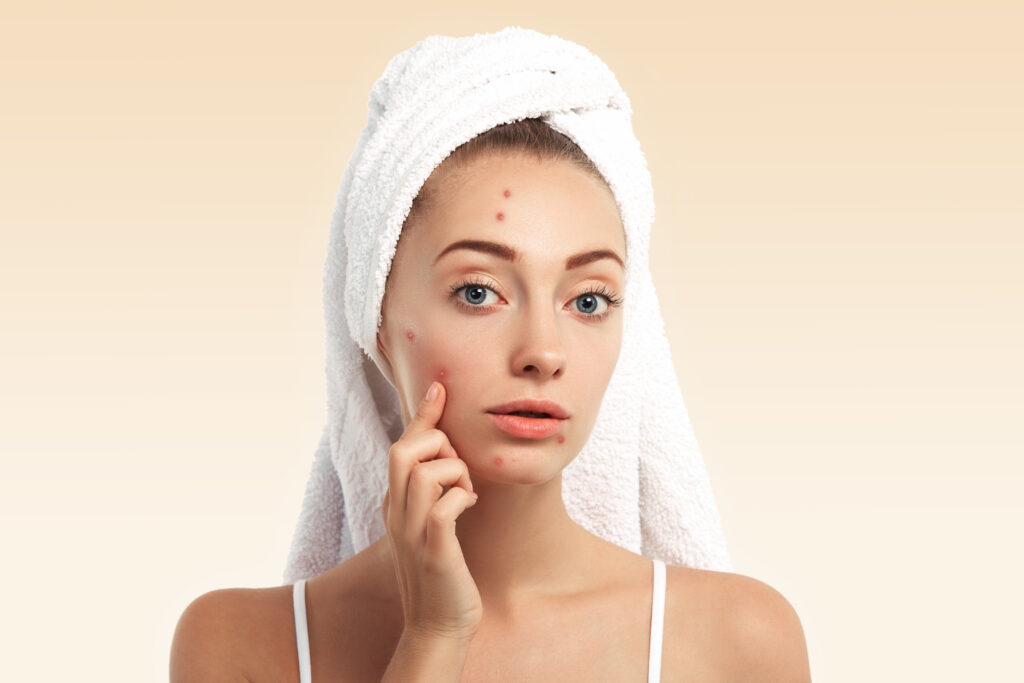The Ultimate Guide to Treating Acne Scars: Why Advanced Therapies Like Fractional CO2 Laser, MNRF, and PRP Give the Best Results
Acne may go away, but the scars it leaves behind can linger for years — sometimes even a lifetime — if not treated properly. For many people, acne scars are more than just skin deep. They affect self-confidence, social interaction, and mental well-being.
Thankfully, advancements in dermatology now offer powerful solutions to visibly reduce — and often nearly eliminate — acne scars. In particular, Fractional CO2 Laser, Microneedling Radiofrequency (MNRF), and Platelet-Rich Plasma (PRP) therapy are cutting-edge treatments that can transform your skin. When used in combination, these procedures deliver superior, faster, and longer-lasting results.
In this blog, we’ll break down everything you need to know: the types of acne scars, how each advanced treatment works, and why combining them is often the best approach for smoother, clearer skin.
Understanding Acne Scars
Not all acne scars are the same — and the treatment you need depends on the type of scars you have.
The Most Common Types of Acne Scars:
- Atrophic (Depressed) Scars:
- Ice Pick Scars: Deep, narrow scars that look like small holes.
- Boxcar Scars: Broad, shallow depressions with defined edges.
- Rolling Scars: Wavy, uneven skin texture caused by fibrous bands beneath the skin.
- Hypertrophic and Keloid Scars:
- Raised, thickened scars due to excess collagen production.
- More common in people with darker skin tones or on the chest, shoulders, and jawline.
Because different scars require different interventions, your dermatologist may recommend a combination of advanced treatments for optimal improvement.
Advanced Acne Scar Treatments That Work
- Fractional CO2 Laser
What It Is:
Fractional CO2 laser is a powerful, ablative resurfacing treatment that uses laser energy to create controlled microscopic wounds in the skin. This triggers your body’s natural healing process and stimulates new collagen and elastin formation.
How It Helps Acne Scars:
- Targets deep dermal layers to remodel damaged tissue
- Breaks down scar tissue while encouraging fresh skin regeneration
- Smooths uneven texture and improves overall skin tone
Best For: Ice pick scars, boxcar scars, and rolling scars. Also helps with enlarged pores and fine lines.
Downtime: 5–7 days of redness, peeling, and sensitivity. Visible improvements in 2–3 sessions spaced 4–6 weeks apart.
- MNRF (Microneedling Radiofrequency)
What It Is:
Microneedling Radiofrequency therapy combines two proven technologies — microneedling and radiofrequency (RF) energy — to stimulate collagen from within. Fine needles create micro-injuries, while RF energy heats deeper layers of the skin to tighten and remodel.
How It Helps Acne Scars:
- Boosts deep collagen remodelling without damaging the outer skin
- Reduces depth of scars, especially rolling and boxcar types
- Improves skin firmness and elasticity
Best For: Moderate to deep scars, especially in patients who can’t tolerate laser downtime or have darker skin tones prone to pigmentation.
Downtime: Mild redness and swelling for 1–2 days. Noticeable improvement after 3–4 sessions spaced 4 weeks apart.
- PRP (Platelet-Rich Plasma) Therapy
What It Is:
PRP uses your own blood’s natural healing components — specifically platelets rich in growth factors — to accelerate skin repair and regeneration. A small amount of your blood is drawn, spun in a centrifuge, and the golden PRP serum is injected or applied topically.
How It Helps Acne Scars:
- Stimulates healing and enhances collagen production
- Reduces inflammation and post-procedure recovery time
- Improves skin tone, hydration, and texture when used with microneedling or laser
Best For: Enhancing the results of laser or MNRF, and for faster healing. Suitable for all skin types.
Downtime: Minimal. Some redness or bruising at injection sites may occur.
Why Combination Treatments Offer the Best Results
Treating acne scars effectively often requires addressing different layers of the skin simultaneously. Each therapy targets a different aspect of scarring:
- Fractional CO2 laser works by resurfacing and restructuring damaged skin at a deeper level.
- MNRF helps firm and tighten skin from within, minimizing scar depressions.
- PRP accelerates healing and supports collagen synthesis, making the other two treatments even more effective.
Benefits of Combining Therapies:
- Deeper scar correction: Fractional CO2 laser and MNRF tackle deep and shallow scars together.
- Faster healing: PRP reduces downtime, redness, and inflammation.
- More natural results: Gradual collagen remodelling leads to smoother, softer skin over time.
- Suitable for all skin types: The combination can be customized depending on skin sensitivity, tone, and scar type.
For example, a typical treatment plan may include Fractional CO2 Laser for deep scars, MNRF for skin tightening and texture improvement, and PRP to boost the healing process and enhance results. Over a course of multiple sessions, most patients see dramatic improvement in texture, tone, and scar depth.
What to Expect: Timeline and Recovery
Most patients undergo a series of 6–8 sessions, depending on the severity of their scarring. Treatments are spaced 4–6 weeks apart to allow full healing and collagen production between sessions.
Visible changes usually begin after the second session, with progressive improvement over the next few months. Maintenance sessions once or twice a year help preserve results and keep skin looking smooth and youthful.
Final Thoughts
Acne scars can feel permanent, but with modern dermatological advancements, clearer, smoother skin is absolutely achievable. While single treatments like Fractional CO2 laser or MNRF can offer results, combining these modalities — especially with PRP therapy — gives the best chance at real transformation.
Every person’s skin and scar type are unique, so the most effective approach will always be personalized by a trained dermatologist. If you’re serious about treating your acne scars, it’s time to explore advanced procedures that go beyond surface treatments and trigger true skin regeneration.
Thinking About Acne Scar Treatment?
Consult a board-certified dermatologist who specializes in laser and regenerative therapies. With the right treatment plan — combining Fractional CO2, MNRF, and PRP — your skin can heal, renew, and reveal its healthiest version.

